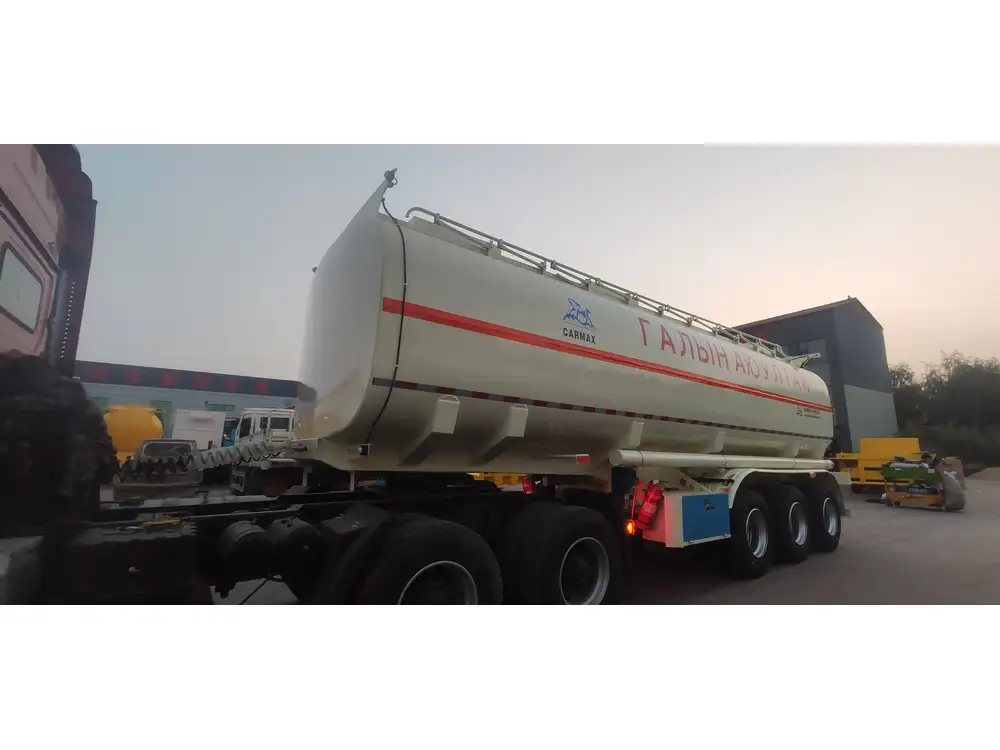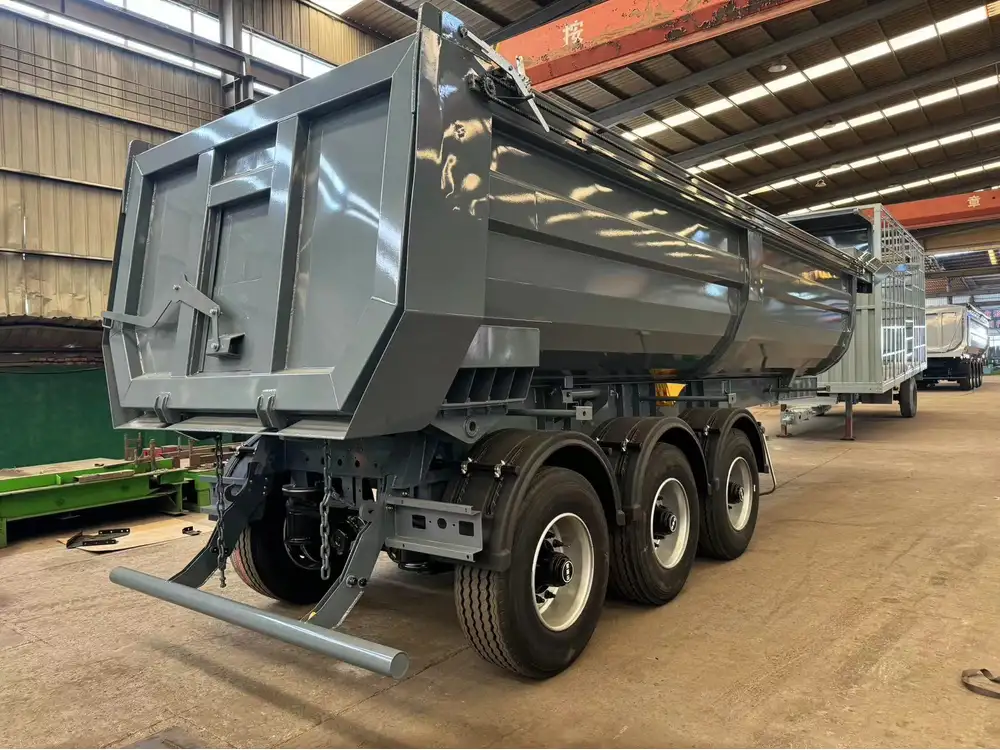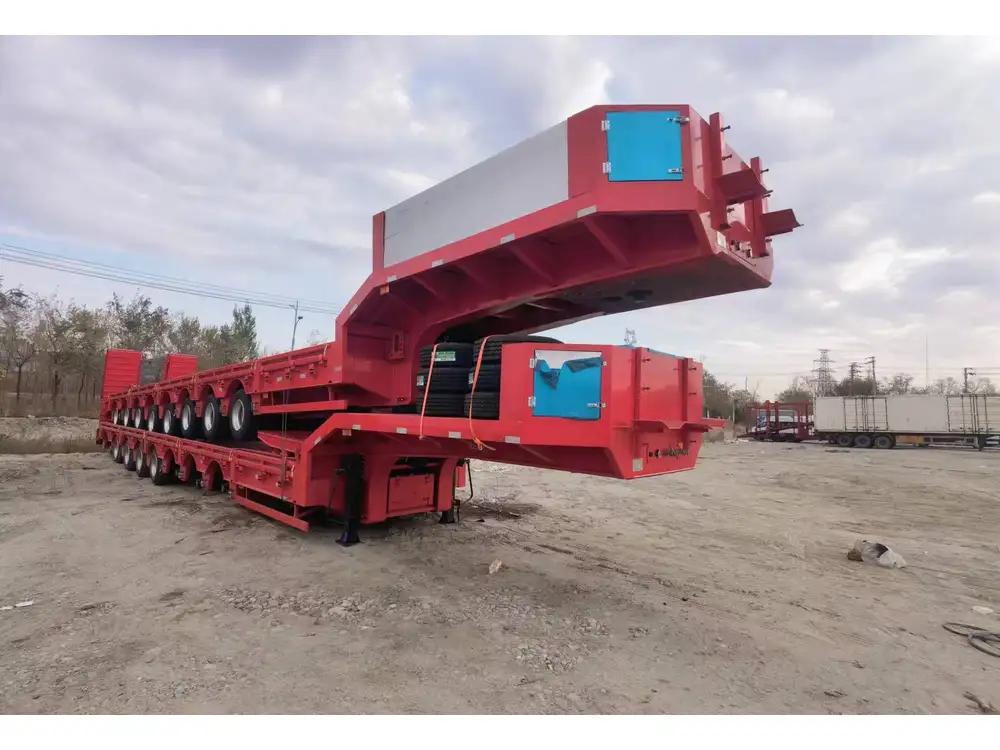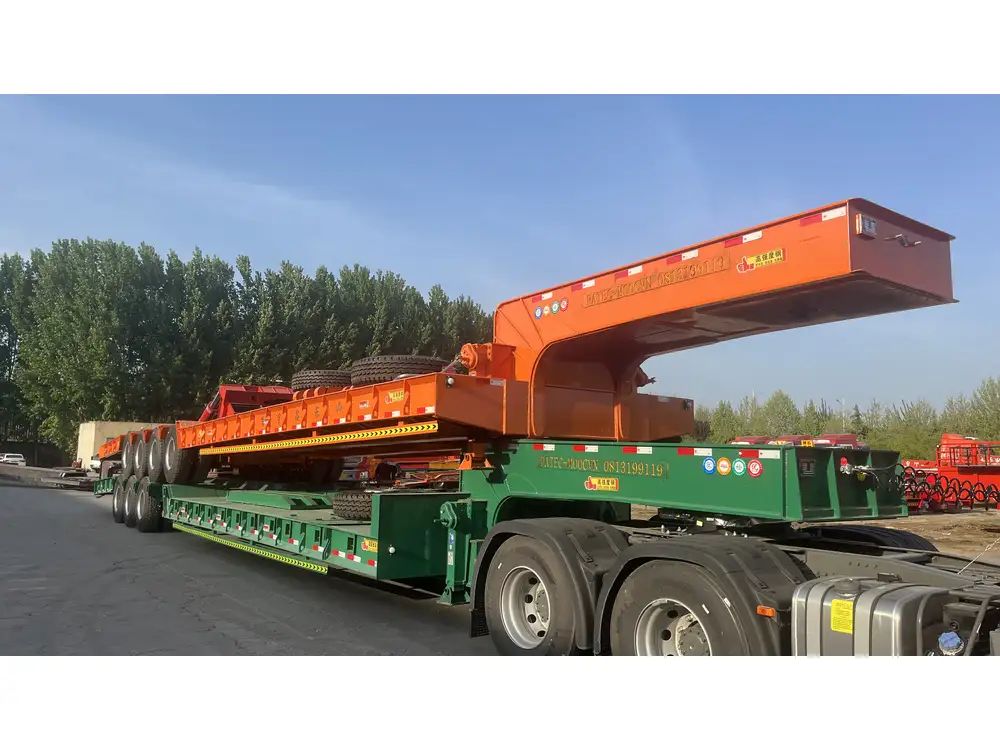Semi-trailer trucks, often simply referred to as semi-trucks or tractor-trailers, play a pivotal role in the logistics and transportation sectors. These vehicles facilitate the bulk movement of goods, materials, and commodities across vast distances, connecting manufacturers and retailers, and consequently shaping the backbone of modern commerce. In this comprehensive guide, we will meticulously explore the essence of semi-trailer trucks, their components, functionalities, various types, and the significant advantages they offer to businesses and industries alike.
Understanding the Components of a Semi-Trailer Truck
At its core, a semi-trailer truck is composed of three primary elements: the tractor unit, the semi-trailer, and the coupling mechanism. Let’s break these down for clarity:
| Component | Description |
|---|---|
| Tractor Unit | The front part of the truck, known as the cab, which houses the driver and the engine. It’s designed to pull the semi-trailer. |
| Semi-Trailer | The rear part that carries the cargo. Unlike full trailers, it does not have a front axle — instead, it rests on the tractor unit. |
| Coupling Mechanism | A pivotal connecting element, generally a fifth wheel hitch, that allows the tractor and trailer to work as a cohesive unit while providing the necessary pivoting capability. |
The Role of the Tractor Unit
The tractor unit, often powered by a robust diesel engine, is built to provide significant torque and power. Capable of towing heavy loads, these units can often reach speeds exceeding 70 mph on highways. Advanced electronics, safety features, and comfortable cabins are integral for long-distance drivers, ensuring compliance with transportation regulations and promoting well-being on the road.

Characteristics of the Semi-Trailer
In juxtaposition with traditional trailers, the semi-trailer is characterized by its lack of a front axle. This design enhances stability and load distribution while allowing for compatibility with various tractor units. The semi-trailer can be classified into diverse categories based on cargo type:
- Flatbed Trailers: Ideal for heavy goods and oversized equipment.
- Reefer Trailers: Temperature-controlled for perishable goods.
- Dry Van Trailers: Enclosed spaces designed for general freight and protection against weather elements.
- Tank Trailers: Specifically designed for transporting liquids, hazardous materials, and fuels.
Coupling Mechanism’s Importance
The fifth wheel coupling mechanism connects the tractor and the trailer. A highly engineered component, it provides the ability to pivot while ensuring a secure attachment, which is crucial for both maneuverability and safety. This coupling allows for seamless transitions between loaded and unloaded states, a frequent necessity in the logistics industry.
Types of Semi-Trailer Trucks
Understanding the different types of semi-trailer trucks can aid businesses in choosing the right solution for their cargo needs.
| Type of Semi-Trailer | Description and Use Cases |
|---|---|
| Flatbed Trailer | Used for heavy equipment, building materials, and large structures due to its open design. Offers easier loading and unloading but requires tarping for weather protection. |
| Reefer Trailer | Refrigerated trailers designed for transporting perishable goods, pharmaceuticals, and temperature-sensitive items. Equipped with a refrigeration unit, offering a temperature range from -20°F to 70°F. |
| Dry Van Trailer | Enclosed trailers suited for general freight, protecting cargo from weather conditions. Ideal for consumer goods, electronics, and textiles. |
| Tank Trailer | Specifically designed for liquid transportation, including chemicals, fuels, and food products. It comes in various sizes and configurations based on material safety standards. |
| Specialty Trailers | Customized trailers tailored for unique cargo needs, such as car haulers, livestock carriers, and hazardous material trailers. |

Advantages of Using Semi-Trailer Trucks
Utilizing semi-trailer trucks brings a myriad of advantages to businesses spanning numerous sectors.
Efficiency in Transportation
The modular design of semi-trailer trucks allows for the quick swap of trailers and cargo loads, minimizing downtime and expediting logistics operations. Businesses benefit from realignment of resources and optimized transport schedules.
Capacity and Flexibility
With varying trailer types catering to different cargo dimensions and weights, semi-trailer trucks can handle a broad spectrum of loads. Their payload capacity is significantly higher than that of standard trucks, thus enabling companies to transport more goods in fewer trips.

Cost-Effectiveness
Despite the initial investment in semi-trailer trucks, the long-term savings are considerable. Reduced fuel consumption per ton-mile translates to lower operational costs, and enhanced durability means less frequent replacements or repairs. This alleviation from constant freight charges contributes to an overall favorable cost-benefit analysis for logistics companies.
Enhanced Safety Features
Modern semi-trailer trucks are outfitted with advanced safety mechanisms, such as robust braking systems, lane departure warnings, automatic stability control, and collision mitigation systems. These features increase driver safety and reduce accident rates, thus fostering a responsible transportation environment.
Key Considerations When Operating Semi-Trailer Trucks
Operating semi-trailer trucks comes with essential responsibilities and considerations that businesses must manage to ensure compliance and safety.

Licensing and Regulations
Drivers of semi-trailer trucks are mandated to possess a Commercial Driver’s License (CDL), specifically a Class A, which signifies their proficiency in handling these vehicles. Additionally, trucking companies must adhere to federal and state regulations, including Hours of Service (HOS) guidelines, which dictate how long drivers can operate before needing rest.
Maintenance and Inspections
Regular maintenance and inspections are critical for ensuring the safe operation of semi-trailer trucks. A proactive maintenance schedule encompassing routine checks of brakes, tires, lights, and the coupling mechanism can prevent costly breakdowns and enhance longevity.
Load Securing and Weight Distribution
Improper load securing or uneven weight distribution can lead to hazardous situations, including rollovers or accidents. Adhering to proper load securing techniques, utilizing tarps, straps, and nets, and understanding the specific weight limits per axle are crucial for safe transport.

Environmental Implications of Semi-Trailer Trucks
As industries move towards sustainability, the environmental footprint of transportation cannot be overlooked. The emissions produced by semi-trailer trucks significantly contribute to air pollution. To counteract this, many manufacturers are exploring eco-friendly alternatives and technologies to reduce fuel consumption and enhance efficiency.
Innovations in Green Technologies
The advent of electric and hybrid semi-trailer trucks is heralding a new era in the transportation landscape. With lower emissions and reduced operational costs, these trucks present a viable solution for eco-conscious businesses and regulators alike. Additionally, advancements in aerodynamics and lightweight materials yield greater efficiencies, allowing for longer hauls with reduced energy consumption.
The Global Impact of Semi-Trailer Trucks
On a macroeconomic level, semi-trailer trucks are foundational to global trade and commerce. They facilitate the smooth transfer of goods from manufacturers to distribution centers, ports, and retailers, impacting various international and domestic trade agreements. The efficiency of logistics and supply chain operations drives economic growth, employment, and competitiveness across sectors.

Conclusion: The Future of Semi-Trailer Trucks
As we look ahead, semi-trailer trucks will undoubtedly continue to evolve. With rapid advancements in technology, shifting market demands, and a growing focus on sustainability, the semi-trailer trucking industry stands on the precipice of transformation. By embracing innovations and best practices, stakeholders can enhance their operational efficiencies while also addressing the pressing environmental challenges of our time.
Through a comprehensive approach focusing on understanding components, types, advantages, and operational considerations, businesses can capitalize on the benefits that semi-trailer trucks offer. It is our goal to support you in navigating this complex yet rewarding field, refining strategies for success in the ever-evolving logistics landscape.



